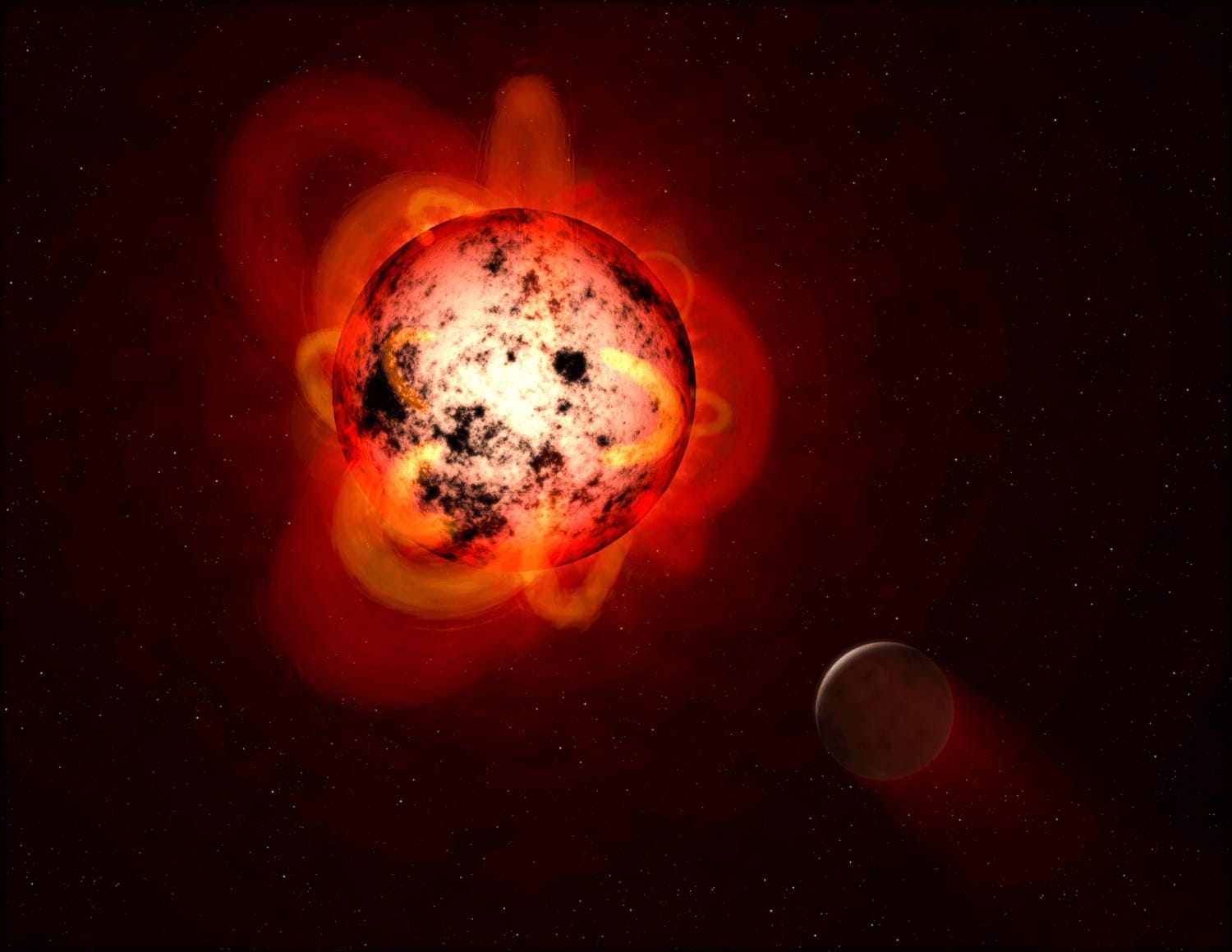Reading menu: Weird cosmic worlds
A neutron star is like a huge atomic nucleus held together by gravity rather than the strong nuclear force. But we don’t fully understand how neutrons interact at extreme temperatures and densities. It’s possible that within a neutron star the neutrons break down into a soup of quarks, forming what is known as a quark star. If quark stars exist, then it’s possible that high-energy up and down quarks could collide to create strange quarks. And this is where things could get, well, a bit strange.
– A Stranger Star / Brian Koberlein
I downloaded NASA’s entire exoplanet archive to mess with the data and see if I could pick out any cool trends! I was having plenty of harmless fun sifting through the data over the weekend, but upon filtering the catalog by the mass of planets’ host stars, I noted something rather peculiar—not one of our dozens of exoplanet hunting missions has yet detected a planet around a star that is greater than 10 solar masses.
– What is the Largest Possible Star with Planets? / Brandon Weigel
This planet must be tough – it is right in the zone where we expected Neptune-sized planets could not survive. It is truly remarkable that we found a transiting planet via a star dimming by less than 0.2% – this has never been done before by telescopes on the ground, and it was great to find after working on this project for a year. We are now scouring out data to see if we can see any more planets in the Neptune Desert – perhaps the desert is greener than was once thought.
– Into the Neptunian Desert / Paul Gilster
“It flies in the face of conventional wisdom that a body the size of Mercury, the smallest rocky planet in our solar system, has not cooled and become geologically inactive long ago,” Watters said. “Somehow, Mercury has managed to insulate its interior and slowed the loss of heat that provides the driving force for geologic activity.”
– Study Reveals That Mercury Is the Not-So-Shrunken Planet / Smithsonian
In 2014, NASA's Swift mission caught a red dwarf emitting a flare 10,000 times more powerful than any ever expelled by our Sun. Most newly born red dwarfs may emit such mega-flares, perhaps in revolt against us having judged them on size. The intense radiation from these mega-flares could prevent life from ever arising on nearby planets.
– Are the Universe's smallest stars promising places for life? / Yours truly

